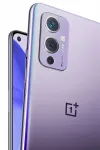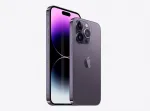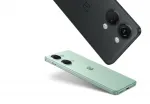The model_name is the Nokia 1600, a simple yet reliable mobile phone from Nokia's 1600 series. Its compact and lightweight body makes it easy to carry around, with dimensions of 104 x 45 x 17 mm (4.09 x 1.77 x 0.67 in) and a weight of 85 g (3.00 oz). This device supports a Mini-SIM card, making it compatible with most networks.
The phone's appearance can be personalized with Xpress-on covers, adding a touch of individuality to its design. It was launched in June 2005 and has since been discontinued, but it is still a popular choice for those seeking a basic and durable mobile phone.
The display of the Nokia 1600 features a 1.4 inch CSTN screen, with a resolution of 96 x 68 pixels (~84 ppi density). The 4-way scroll key allows for easy navigation through the phone's menus and features. The display is capable of producing 65K colors, providing clear and vibrant visuals for its users.
Equipped with a removable Li-Ion 900 mAh battery (BL-5C), the Nokia 1600 has a standby time of up to 450 hours, and a talk time of up to 5 hours and 30 minutes. This ensures that users can stay connected without having to constantly worry about their battery life.
The device has a memory capacity of 4MB, sufficient for storing up to 200 entries in the phonebook and 10 dialed, 10 received, and 10 missed calls in the call records. It does not have a card slot for external storage, but the internal memory is enough for basic everyday use.
In terms of connectivity, the Nokia 1600 has limited options. It is not equipped with WLAN, USB, or Bluetooth, making it impossible for users to connect to the internet or transfer files wirelessly. It also does not have a radio or positioning capabilities, limiting its functions to basic communication.
The device operates using GSM technology and is compatible with GSM 850 / 900 / 1800 / 1900 bands. The US version of the Nokia 1600 supports GSM 850 / 1900 bands, making it suitable for use in the country. However, it does not support GPRS or EDGE technology, so browsing the internet may not be possible.
The Nokia 1600 does not have a built-in camera, so taking pictures or recording videos is not an option. However, it does have a loudspeaker and supports polyphonic ringtones, with 20 options for users to choose from.
Other features of the device include predictive text input, allowing for faster and more accurate typing, and 3 pre-installed games: Snake Xenzia, Dice, and Cricket Cup. Although the Nokia 1600 does not have Java support, its messaging capabilities include SMS and instant messaging.
The device's SAR (Specific Absorption Rate) value, a measure of the rate at which energy is absorbed by the body when using a mobile phone, is 1.12 W/kg (head) and 1.08 W/kg (body). Its SAR EU value is 0.80 W/kg (head). These values are well within the safety limits set by regulatory agencies.
In terms of price, the Nokia 1600 was priced at about 50 EUR upon its release, making it an affordable option for those in search of a reliable and basic mobile phone.
In conclusion, the Nokia 1600 may not have all the advanced features of modern smartphones, but it still remains a popular choice for those looking for a simple and sturdy mobile phone. Its compact and lightweight design, long battery life, and customizable appearance make it a practical choice for everyday use. However, its limited connectivity options and lack of a camera may not be suitable for those looking for more advanced features.









